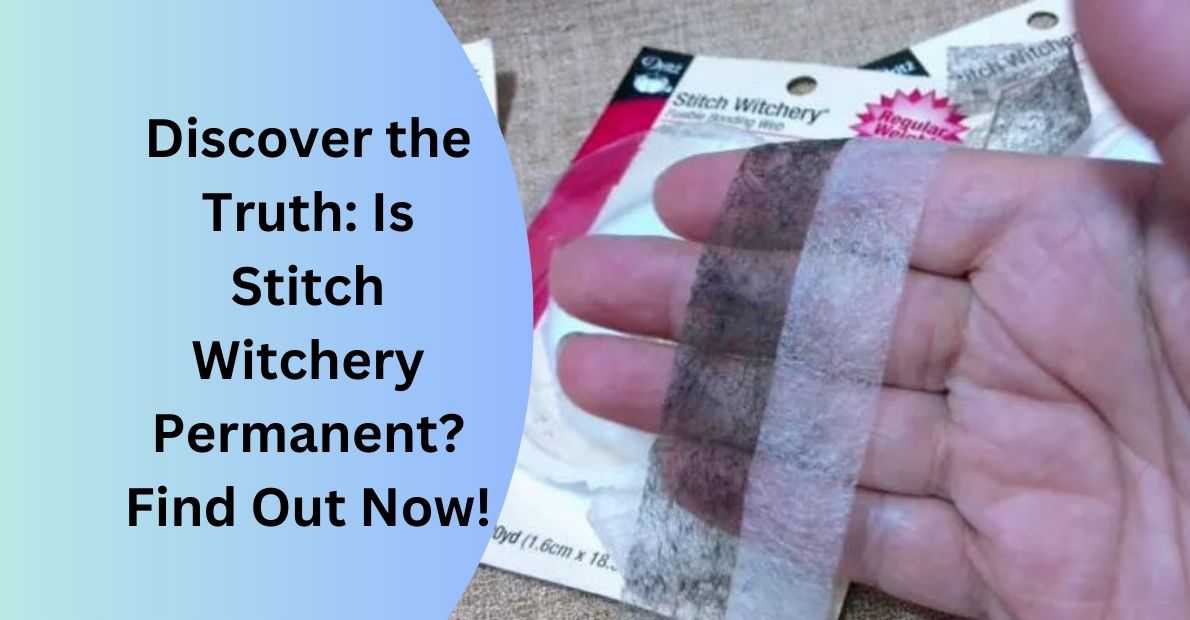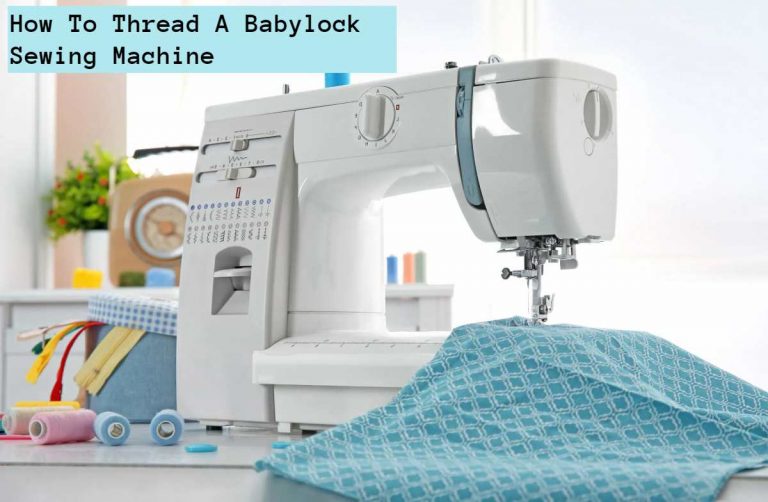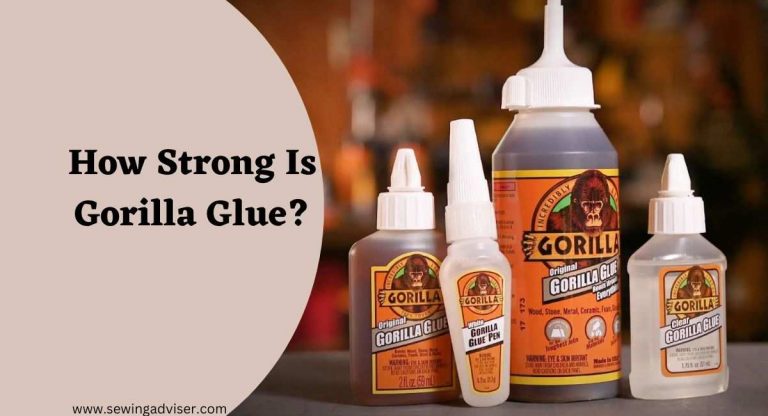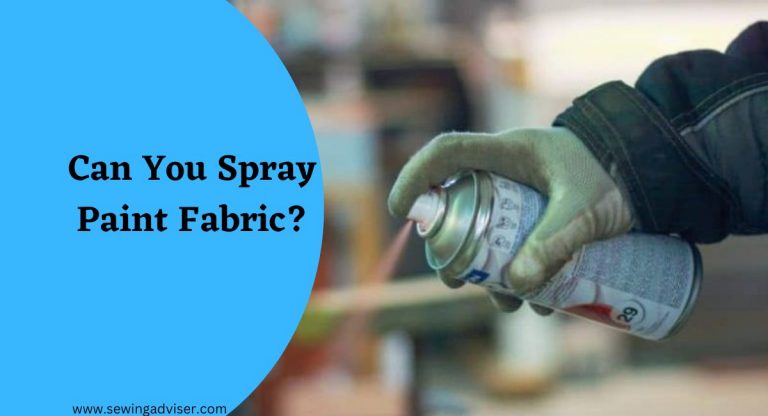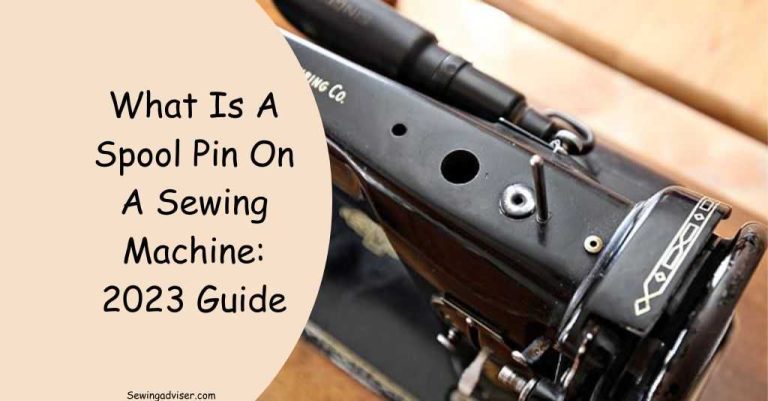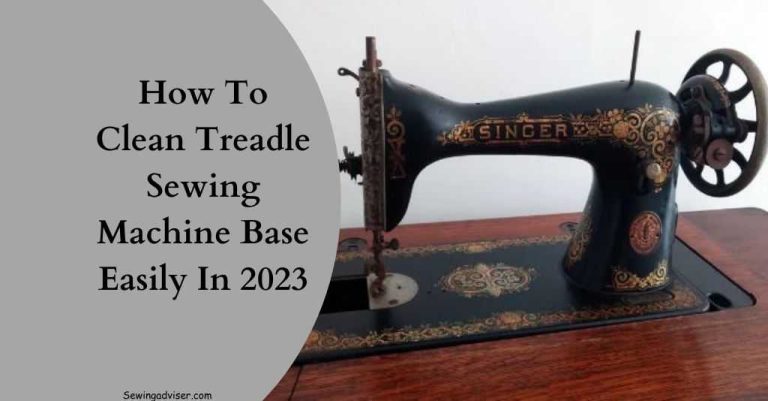Discover the Truth: Is Stitch Witchery Permanent? Find Out Now!
Have you ever wondered if Stitch Witchery, that popular fabric adhesive, is a permanent solution for your sewing projects?
Whether you’re a seasoned seamstress or just starting out with needle and thread, it’s important to know the long-term effects of using this versatile tool.
In this article, we’ll explore the question: Is Stitch Witchery permanent? Let’s start now without wasting any further time.
Is Stitch Witchery Permanent?
No, Stitch Witchery is not permanent. Stitch Witchery is a fusible bonding web used for temporary fabric repairs or hems. It creates a temporary bond that can be easily removed with heat, such as ironing, allowing for future alterations or repairs to be made.
How To Use Stitch Witchery?
Here’s a step-by-step guide on how to use Stitch Witchery:
- Prepare your materials: Gather the fabric you want to join or hem, along with the Stitch Witchery tape. Make sure the fabric is clean and pressed.
- Cut the Stitch Witchery: Measure and cut the desired length of Stitch Witchery tape. It should be slightly shorter than the area you want to bond, leaving a small margin on each end.
- Position the tape: Place the Stitch Witchery tape between the layers of fabric where you want them to bond. Make sure the rough side of the tape is facing up, and position it close to the edge for hems or in the desired location for other repairs.
- Apply heat: Using a dry iron set it to the appropriate temperature for the fabric you are working with (refer to the fabric care label for guidance). Press the iron down on top of the Stitch Witchery tape and hold it for a few seconds. Apply firm pressure without sliding the iron to ensure proper bonding.
- Repeat the process: Lift the iron and move it to the next section of the tape, overlapping slightly with the previously bonded area. Press down and hold for a few seconds, bonding the fabric together. Continue this process until the entire length of the tape is bonded.
- Let it cool: After bonding each section, allow the fabric to cool for a few seconds. This cooling process helps the adhesive set and ensures a strong bond.
- Check the bond: Carefully lift the fabric to check if the bond is secure. If needed, reapply heat and pressure to any areas that may not have bonded completely.
- Finish the project: Once the bond is secure, trim any excess Stitch Witchery tape if it extends beyond the fabric edges. You can now proceed with wearing or using your repaired or altered garment.
The durability of Stitch Witchery
Stitch Witchery provides a reliable temporary bond between fabrics. It is designed to withstand normal wear and tear, such as washing and drying. However, it is important to note that Stitch Witchery is not as durable as sewing.
Over time, the bond may weaken or come undone, especially with frequent washing or exposure to high heat. Therefore, it is best suited for temporary alterations or quick fixes rather than long-term or permanent solutions.
Factors that Affect the Permanence of Stitch Witchery
Several factors can influence the permanence of Stitch Witchery. These include the type of fabric, the amount of stress placed on the bond, and the care instructions followed.
Fabrics with a tight weave, such as cotton or polyester, generally provide a stronger bond compared to loosely woven fabrics like silk or chiffon.
Additionally, the more stress or tension applied to the fabric, the greater the chance of the bond breaking or coming undone.
It is also important to follow the care instructions for the fabric to ensure the longevity of the bond.
Some Tips You Need To Keep Handy
Here are some handy tips to keep in mind when using Stitch Witchery:
- Choose the appropriate type and width of Stitch Witchery tape based on your specific project. Different widths are available to accommodate various bonding needs.
- Always follow the instructions provided by the manufacturer. Each brand may have slightly different recommendations for application and heat settings.
- Test the Stitch Witchery on a small, inconspicuous area of the fabric before applying it to a larger area. This will help you ensure that it adheres properly and does not damage or discolor the fabric.
- Make sure your fabric is clean and pressed before using Stitch Witchery. Any dirt, stains, or wrinkles can affect the bonding process.
- Use a pressing cloth or a thin piece of fabric between the iron and the Stitch Witchery to protect both the adhesive and your iron from any potential residue or adhesive transfer.
- Be careful not to overheat the fabric or the Stitch Witchery. Follow the recommended temperature settings for your specific fabric type to avoid scorching or damaging the material.
- If you’re working with a delicate or sensitive fabric, consider using a lower heat setting or using a pressing cloth for additional protection.
- Take your time and apply firm, consistent pressure when using the iron. This ensures proper bonding between the fabric and the Stitch Witchery tape.
- For hemming projects, it’s advisable to try the garment on and mark the desired hem length before applying the Stitch Witchery. This way, you can ensure an accurate and even hem.
- If you’re working on a larger project or a thick fabric, consider bonding the Stitch Witchery in sections rather than attempting to bond the entire length at once. This will allow you to apply heat and pressure more effectively.
How Do You Remove Stitch Witchery?
To remove Stitch Witchery, follow these steps:
- Prepare your garment: Ensure that the fabric is suitable for removal using Stitch Witchery. Some delicate or heat-sensitive fabrics may be damaged during the removal process. If unsure, test a small inconspicuous area first.
- Heat the iron: Set your iron to the appropriate temperature for the fabric. Check the fabric care label for guidance on iron settings.
- Protect the garment: Place a clean, lightweight cloth or towel over the Stitch Witchery area. This will prevent direct contact between the iron and the fabric.
- Apply heat: Press the iron over the cloth, directly on top of the Stitch Witchery. Hold the iron in place for a few seconds, allowing the heat to melt the adhesive.
- Peel off the adhesive: Once the adhesive has melted, carefully peel it away from the fabric. Use a pair of tweezers or your fingers to gently lift the Stitch Witchery from the garment.
- Repeat if necessary: If any residue remains, repeat the process by applying heat and peeling off the adhesive. Be cautious not to apply too much heat or tug forcefully, as this can damage the fabric.
- Clean the fabric: After removing the Stitch Witchery, check the fabric for any adhesive residue. If present, dab a small amount of rubbing alcohol onto a clean cloth and gently blot the residue. This should help dissolve and remove any remaining adhesive.
- Launder or dry clean: Finally, wash the garment according to its care instructions or take it to a professional cleaner if necessary.
Tips for Removing Stitch Witchery
If you want to remove Stitch Witchery from your fabric, follow these steps:
- Apply heat to the bonded area using an iron set to the appropriate temperature for the fabric.
- Gently peel the bonded fabric apart while applying heat to the adhesive.
- If any residue remains, use a clean cloth dampened with rubbing alcohol to remove it.
- Launder the fabric as per the care instructions to remove any remaining adhesive.
Causes of Stitch Witchery, not Working
Stitch Witchery is a popular brand of fusible bonding web used for fabric and craft projects. If you’re experiencing issues with Stitch Witchery not working as expected, there could be a few possible causes:
- Incorrect application: Stitch Witchery requires heat and pressure to activate the adhesive and bond the fabrics together. Ensure that you are following the instructions properly and applying enough heat and pressure for the recommended duration. Using an iron set to the appropriate temperature and pressing firmly can help achieve better results.
- Unsuitable fabrics: Stitch Witchery works best on certain types of fabrics, such as cotton, linen, and some synthetic blends. It may not adhere well to fabrics that are heavily textured, very delicate, or coated with certain finishes. Check the compatibility of the fabric with the bonding web before using it.
- Dirty or contaminated surfaces: If the fabric surfaces are dirty, oily, or have any residue on them, the adhesive may not bond properly. Ensure that both fabric surfaces are clean and free from any debris or substances that could interfere with the adhesion. You can pre-wash the fabrics and use a clean pressing cloth when applying the Stitch Witchery.
- Insufficient heat or pressure: If you’re not applying enough heat or pressure during the bonding process, the adhesive may not activate fully. Make sure your iron is set to the appropriate temperature and press firmly on the fabric, following the recommended instructions. Be cautious not to scorch or damage the fabric with excessive heat.
- Old or expired product: Like any adhesive, Stitch Witchery can lose its effectiveness over time or if stored improperly. Check the expiration date on the packaging and ensure that you’re using a fresh and properly stored product.
If you have tried the above suggestions and are still facing issues with Stitch Witchery, it might be helpful to contact the manufacturer or consult with an expert in fabric bonding techniques for further assistance.
Is Hem Tape Permanent?
Hem tape is not typically considered permanent. It is a temporary solution for quickly and easily hemming clothing or fabric without sewing.
Hem tape is designed to hold the hem in place temporarily and can be removed or repositioned if needed.
It is a convenient option for temporary alterations or when sewing is not an available or preferred option. However, for a more permanent hemming solution, sewing is generally recommended.
Sewing provides a stronger and longer-lasting bond between the fabric layers, ensuring that the hem remains secure over time.
Can Stitch Witchery be Washed and Dried?
Yes, Stitch Witchery can generally be washed and dried, but it is important to follow the specific instructions provided by the manufacturer. Stitch Witchery is a fusible bonding web used for fabric projects, such as hemming or adding embellishments. Here are some general guidelines:
- Washing: Before washing any item that has been bonded with Stitch Witchery, it is advisable to check the garment care label to ensure it can be safely laundered. Most fabrics can be washed without any issues, but delicate or specialty fabrics may require special care.
- Machine washing: If the fabric can be machine washed, turn the garment inside out and wash it on a gentle cycle with cold water. Avoid using harsh detergents or bleach, as they may damage the adhesive bond. It’s recommended to use a mild detergent suitable for the fabric type.
- Hand washing: If machine washing is not recommended or if you prefer to hand wash, fill a basin or sink with cold water and add a small amount of gentle detergent. Gently agitate the garment in the water, avoiding any excessive rubbing or twisting.
- Drying: After washing, carefully remove the garment from the machine or gently squeeze out excess water from hand washing. It is typically safe to air dry or tumble dry on a low heat setting, but refer to the Stitch Witchery instructions for specific recommendations. Avoid using high heat, as it can weaken the bond.
Does Stitch Witchery Work?
Yes, Stitch Witchery is generally considered to be an effective and convenient product for various fabric bonding purposes. It is commonly used for tasks such as hemming, mending, and adding embellishments without the need for traditional sewing. Stitch Witchery is a fusible bonding web that activates when heat is applied, creating a strong bond between fabric layers.
When used correctly, Stitch Witchery can provide a reliable alternative to sewing, especially for quick fixes or projects where sewing may be impractical or undesirable. It is often used for temporary alterations or for fabrics that are difficult to sew, such as delicate fabrics, synthetic materials, or fabrics that may fray easily.
However, it’s important to note that the effectiveness of Stitch Witchery can vary depending on factors such as the fabric type, weight, and condition, as well as the specific application method and heat used. It is always recommended to carefully follow the manufacturer’s instructions and perform a test on a small, inconspicuous area of the fabric before applying Stitch Witchery to the entire project.
Additionally, while Stitch Witchery can create a strong bond, it may not be as durable as traditional sewing in all cases. For items that will undergo frequent or heavy use, or for applications that require a permanent and highly secure bond, sewing is generally considered the more reliable option.
Ultimately, the success of using Stitch Witchery depends on the specific project and personal preferences. It is advisable to consider the nature of the fabric and the intended use of the item before deciding whether Stitch Witchery is the appropriate solution.
Can I use Stitch Witchery on Jeans?
Yes, Stitch Witchery can be used on jeans. It is a versatile fabric bonding product that can be used on various types of fabrics, including denim, which is the material typically used for jeans. Stitch Witchery can be particularly useful for hemming jeans or making temporary alterations without sewing.
Here’s how you can use Stitch Witchery on jeans:
- Prepare the jeans: Ensure that the jeans are clean and free of any dirt or debris before applying Stitch Witchery. It’s best to wash and dry the jeans according to the garment care instructions to remove any sizing or finishes that may interfere with the bonding process.
- Measure and cut the Stitch Witchery: Determine the desired length of the hem or the area you want to bond. Cut the Stitch Witchery to the appropriate length, following the manufacturer’s instructions. It’s generally recommended to cut the Stitch Witchery slightly shorter than the desired length to prevent it from peeking out when the jeans are worn.
- Position the Stitch Witchery: Place the Stitch Witchery between the fabric layers where you want to create the bond. For hemming, fold the fabric to the desired length and insert the Stitch Witchery inside the fold, aligning it with the raw edge of the fabric. Make sure the Stitch Witchery is evenly distributed and covers the entire area to be bonded.
- Apply heat: Use a dry iron on the appropriate heat setting for the fabric. Press the iron on top of the fabric where the Stitch Witchery is placed, applying firm and even pressure. Move the iron slowly across the area, ensuring that the heat is evenly distributed. Follow the manufacturer’s instructions for the recommended ironing time.
- Let it cool: Allow the bonded area to cool completely before handling or wearing the jeans. This will ensure that the bond has been fully set and is secure.
Conclusion: Is Stitch Witchery Permanent?
In conclusion, Stitch Witchery is a convenient fabric adhesive that provides a temporary solution for hemming and making alterations. While it offers a strong bond, it is not considered permanent and may require periodic touch-ups or reapplication.
When using Stitch Witchery, it is important to consider the type of fabric, and the amount of stress on the bond, and to follow proper application and removal techniques. By doing so, you can effectively utilize Stitch Witchery for quick and temporary fabric alterations.
FAQs: Is Stitch Witchery Permanent?
Is Stitch Witchery machine washable?
Yes, Stitch Witchery is machine washable. However, it is recommended to follow the fabric’s care instructions for the best results.
Can Stitch Witchery be used on delicate fabrics?
Yes, Stitch Witchery can be used on delicate fabrics, but extra care should be taken to prevent any damage to the fabric during the bonding process.
How long does Stitch Witchery bond last?
The durability of the bond depends on various factors, such as fabric type, stress on the bond, and care instructions followed. With proper application, the bond can last for a considerable period, but it may require occasional touch-ups.
Can Stitch Witchery be used to attach patches or appliques?
Yes, Stitch Witchery is commonly used to attach patches or appliques to the fabric. It provides a strong bond that holds the embellishments securely in place.
Is Stitch Witchery suitable for permanent alterations?
Stitch Witchery is not recommended for permanent alterations. It is best used for temporary fixes or alterations that may need to be adjusted or removed in the future.
